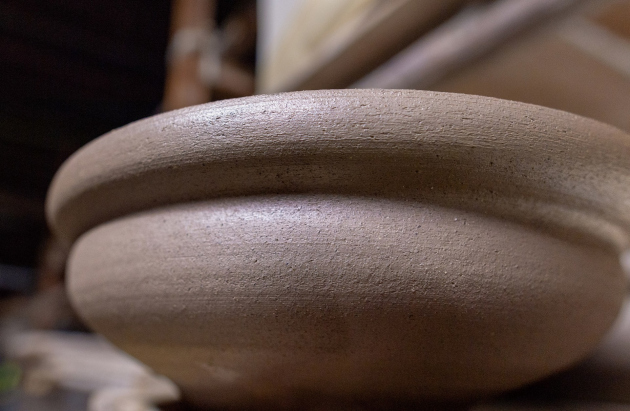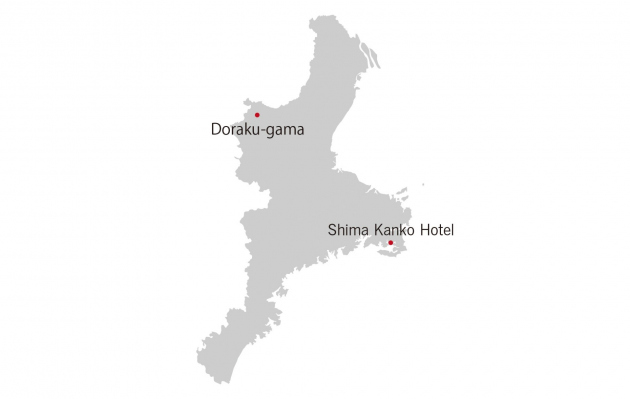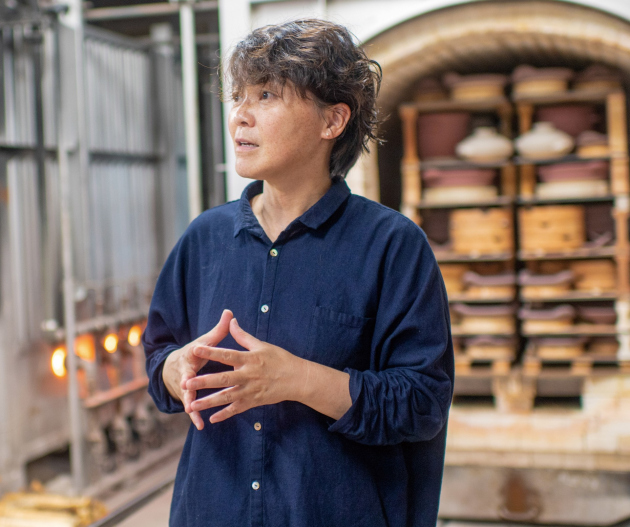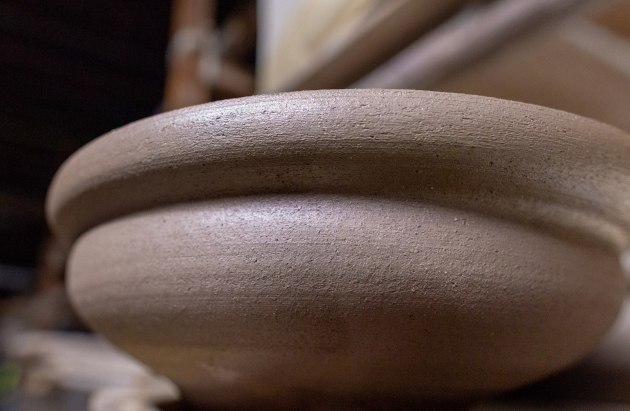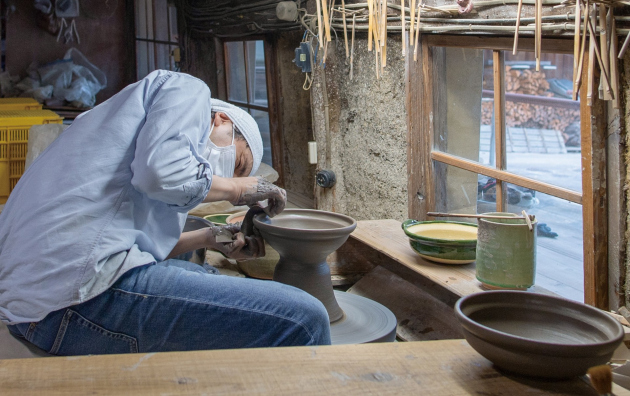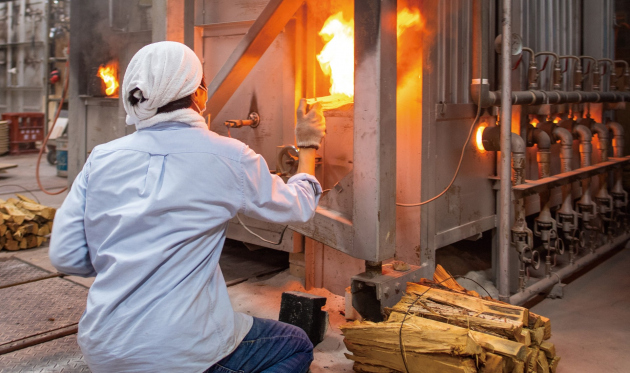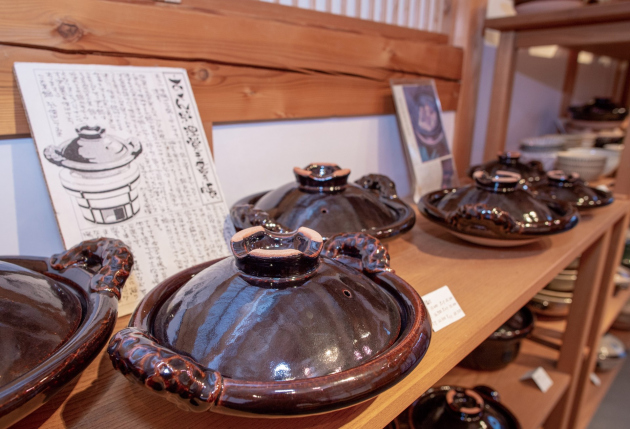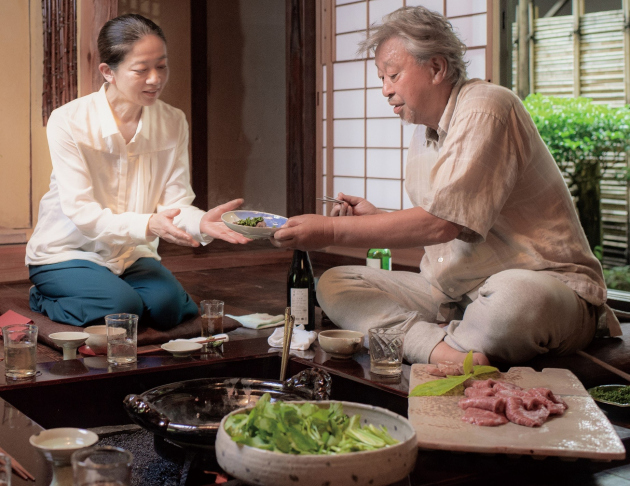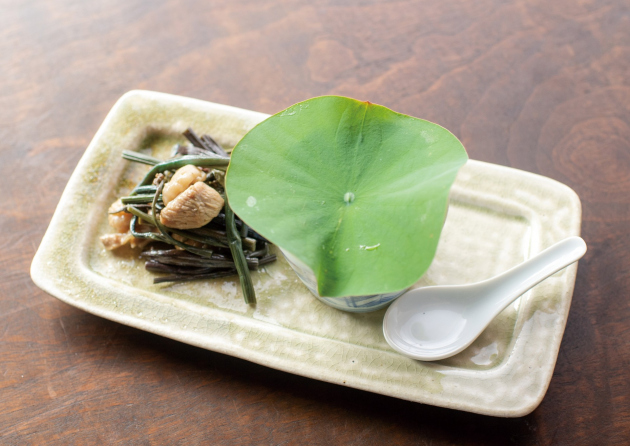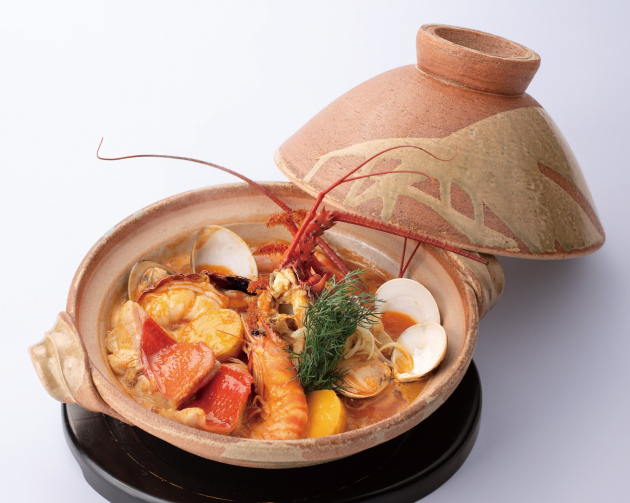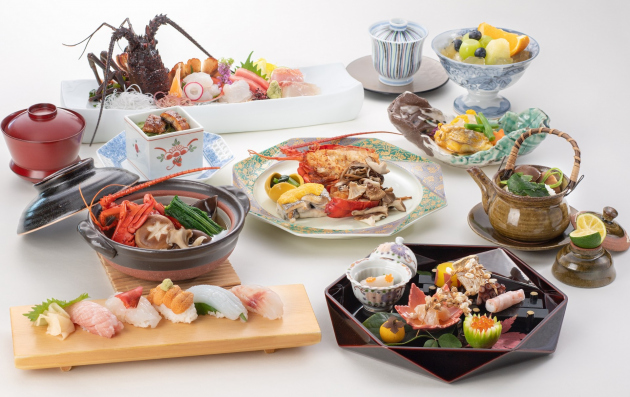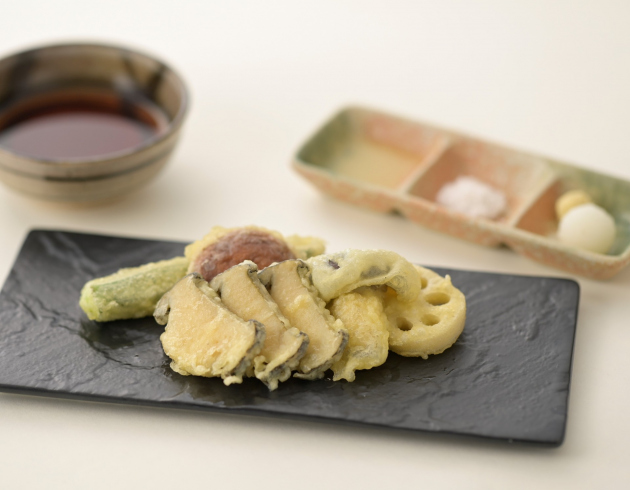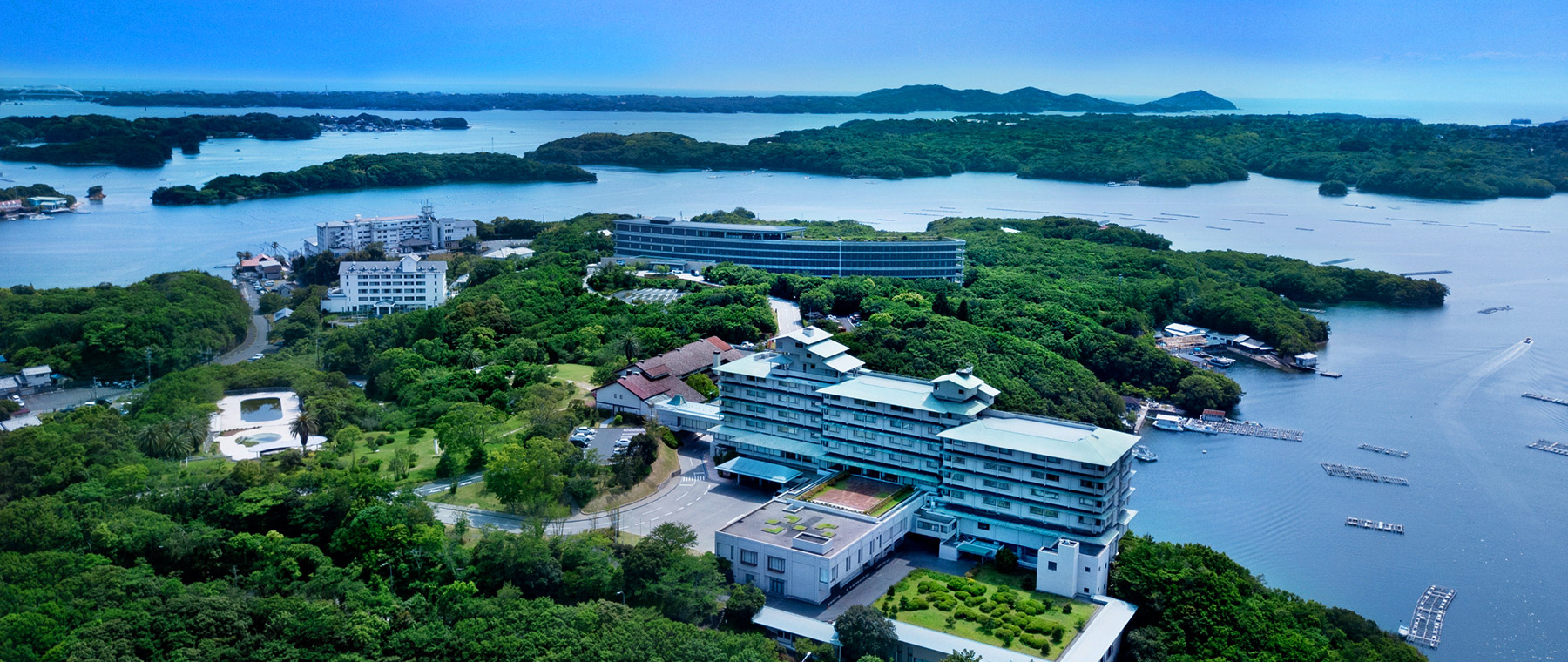Iga Ware Doraku-gama
Shima Kanko Hotel’s seasonal magazine "Shima Time" introduces the four seasons of Ise-Shima through the local culture, rich nature, and food.
Creating Donabe (Earthenware Pots) Inspired by Local Iga Clay
From Shima Time Autumn 2023 Issue
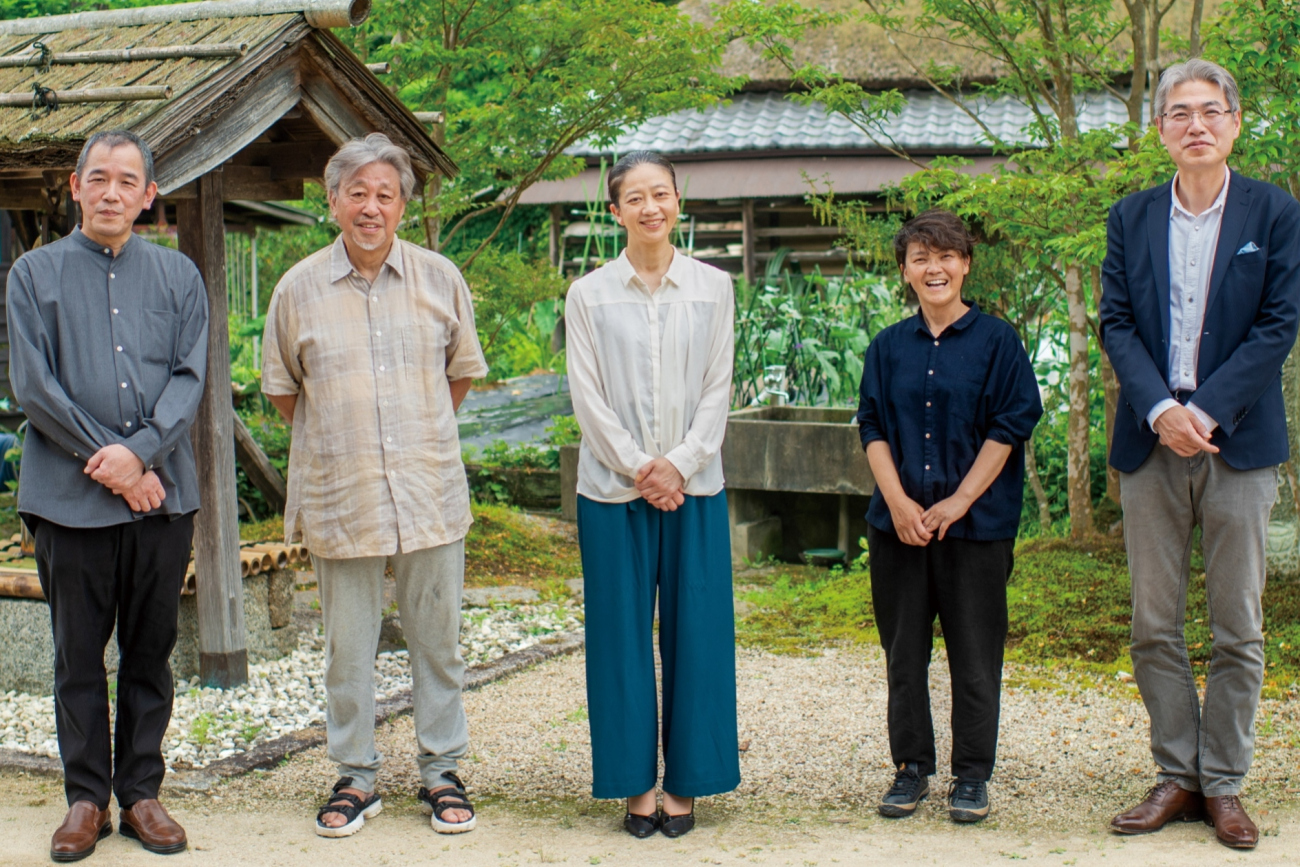
From left: Japanese Cuisine Executive Chef Tsukahara, Masatake Fukumori, Executive Chef Higuchi, Michiho Fukumori, Chef Sommelier Sugihara
Iga City is located in the Ueno Basin in western Mie Prefecture and is a major producer of Iga Ware. Marubashira, Iga City is located on top of clay-rich soil dating back to the Kobiwako Group, where Biwa Lake is said to have existed until about 3 million years ago, and has had a long history of pottery-making since the Nara period. Today, around 30 kilns in the area continue to produce various items, primarily tableware and cookware such as donabe.
During our visit to the kilns with Executive Chef Higuchi, Japanese Cuisine Executive Chef Tsukahara, and Chef Sommelier Sugihara, we delved into Doraku-gama’s unique art of donabe-making with local Iga clay and discovered their nature-centric lifestyle.
Making Full Use of the Clay of the Land.
Doraku-gama, located at the foot of Mt. Sasagatake, has an area of approximately 3,000 square meters and is equipped with seven workshop buildings, as well as kilns.
Our guide was Michiho Fukumori, a pottery artist and the 8th generation owner of Doraku-gama. “Marubashira has all the necessary conditions for pottery, including an abundance of red pines for firewood and a slope for building a climbing kiln. Iga clay is particularly suitable as a material for earthenware pots."
Iga clay has few metallic impurities and is said to be highly refractory. The organic matter contained in the clay burns during firing, creating many pores within the material.
At Doraku-gama, three craftsmen create donabe using hand-driven lathes.
Michiho explains the reason, saying, “The pores slow down the transmission of heat. During molding, if strong pressure is applied with a press, the round air particles (pores) would be crushed. These round pores can be maintained by gently pulling up the clay and wrapping it with your hands. This results in donabe that gradually heats up when heated, and retains that heat for a long time. The reason we are so particular about molding with our hands is to make the most of the characteristics of Iga's clay."
The donabe is first molded on a lathe, then after molding, the bottom is trimmed off, a handle is attached, and the pots are left to dry naturally over a period of about a week to 10 days.
After that, the donabe is completed with a black shine through bisque firing, glazing, and glost firing.
“The black color is due to the high proportion of iron in the glaze. Once you become accustomed to using it, you'll be able to cook with it like a frying pan." It’s also suitable for steamed dishes and stews that are slowly cooked to bring out the flavor.
Michiho says, “Donabe are also excellent as dishware. For example, in the summer, you can put ice in it and serve dishes such as sashimi on top. Not only does the donabe prevent the ice from melting easily, but people will be surprised a donabe is used for serving." Donabe, with its origins in Jomon pottery, is a versatile and aesthetically pleasing cookware that can even act as dishware.
Inspiration From Nature. Living with Mountain Village Blessings.
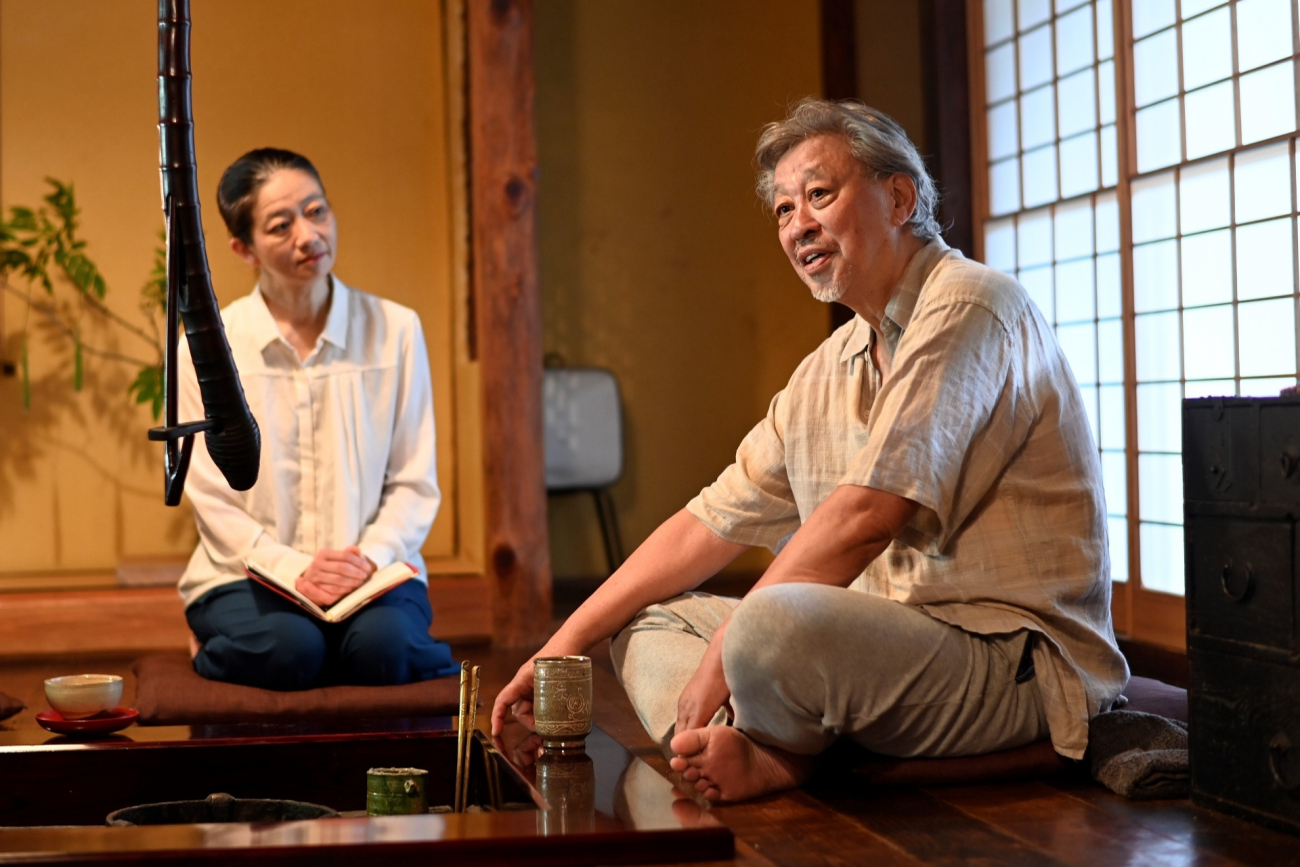
“In the morning, I spend about an hour and a half walking in the mountains, picking flowers and wild vegetables. When I find clay that could be used in pottery, I collect it and try it out. Good clay is found in places that cannot be dug with heavy equipment." The room is decorated with flowers that Masatake picked that morning.
Masatake, who also has excellent knowledge and passion for food, made us Iga beef sukiyaki, claiming that it exemplifies the characteristics of Iga Ware donabe.
A heat-resistant donabe made from Iga clay is heated to 300°C with charcoal, and beef sliced approximately 5 mm thick is placed in it. “The Donabe heats the meat quickly and evenly without burning it, and also retains moisture, making the meat less likely to get hard. You'll be surprised when you eat it."
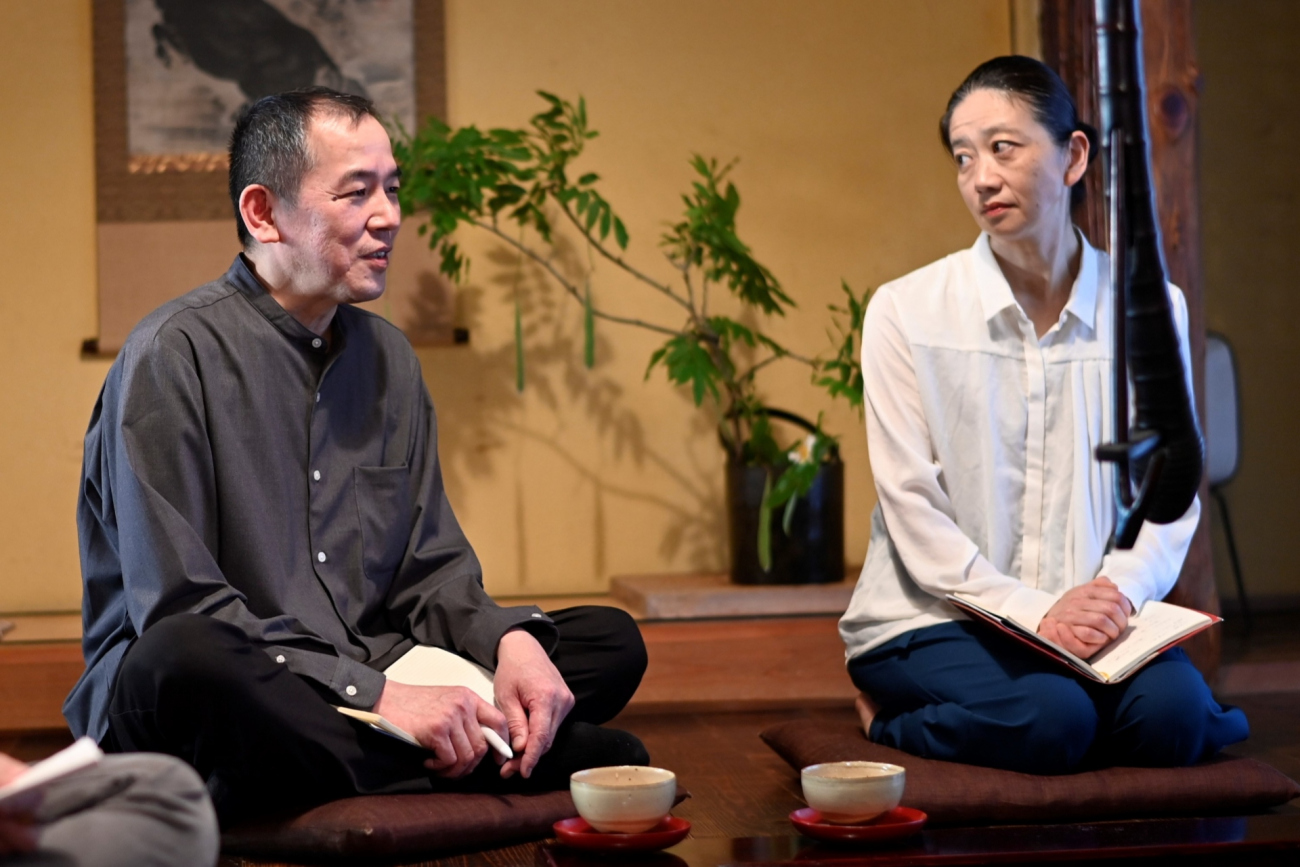
Masatake says, “When I make dishware, I don't necessarily stick to the Iga Ware shape. Of course, I also make donabe and plates, but I make plates that I personally would like to use when eating food from nature. I also make teaware."
Finally, we asked the two about the charm of Marubashira. Masatake says, “We are blessed with nature and have everything we need to live. There is firewood in the mountains, and the wild boar is delicious in the winter. I believe that nature is the teacher of life.” Michiho adds, “Everything that is here right now, everything that is alive, is the model for my creations. I want to believe in and create things I can be proud of, while feeling the beauty of nature such as leaves, which is nature’s original dishware, and the changing seasons.”
The way of life learned from nature seemed to be reflected in the powerful yet beautiful expressions of the donabe.
Autumn Dish Delivered by Executive Chef - Hiroe Higuchi's Cooking Story
Stewed Seafood with Saffron Flavor
A bouillabaisse that uses the power of Doraku-gama’s donabe to gently enhance the flavors of seafood.
A hotpot dish with kurumaebi and Ise-ebi in heart-warming red soup served in a simple yet beautiful donabe. The rich flavors of the seafood blend harmoniously, resulting in a unique donabe-prepared dish that showcases the charm of Mie.
It is planned to be served as an a la carte menu item (for 2 people or more) starting September.
*Period of availability may change depending on shipment conditions.
| French Restaurant "La Mer" | The Bay Suites 5F Dinner 17:30 - 21:00 (L.O. 19:30) *Some changes are currently in effect for our business hours |
|---|
Autumn Dish Delivered by Japanese Executive Chef - Kyoji Tsukahara’s Cooking Story
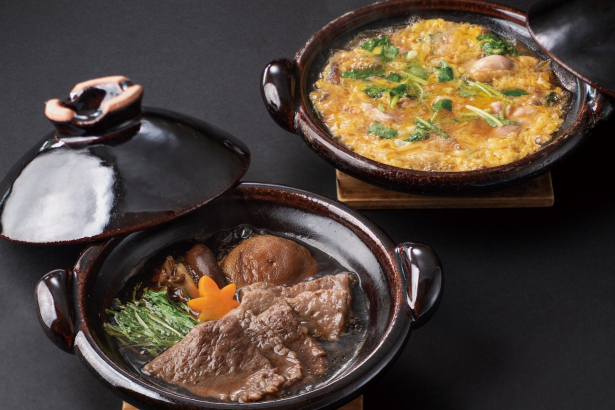
Kumano Chicken with Soft Scrambled Egg and Iga Beef Sukiyaki in Iga Ware Doraku-gama
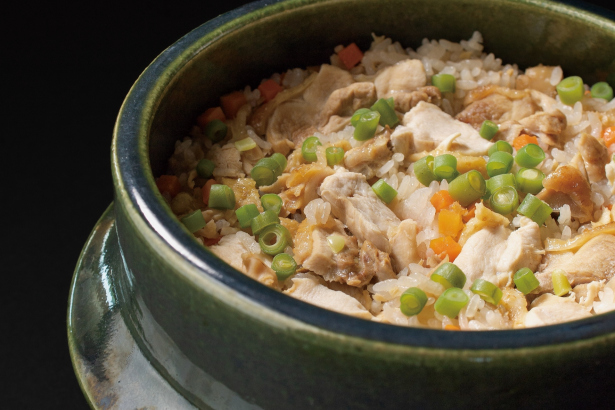
Donabe-Cooked Rice with Kumano Chicken
The donabe-cooked rice takes full advantage of the powerful flavor of the Kumano chicken. Bonito flakes and kelp are added to Kumano chicken bones and wings to make a stock, then heated together with rice, shredded chicken wings, and vegetables. Each grain of cooked rice has the rich flavor of Kumano chicken. Furthermore, bite-sized pieces of blanched chicken thigh is added, and as it steams, the chicken becomes tender, making it a satisfying and flavorful dish worthy of being a centerpiece.
The Kumano chicken with soft scrambled egg is made by simmering thigh meat with onions and log wood cultivated shiitake mushrooms in a donabe, then adding an egg to finish. Enjoy its gentle taste in the lingering warmth of the donabe.
By taking advantage of the gradual heating characteristics of the donabe made by Doraku-gama, the top sirloin cap and sirloin cuts of Iga beef are served in sukiyaki-style. The meat is heated evenly in the donabe, then the log wood cultivated shiitake mushrooms and vegetables are added and seasoned together with a sweet stock. We hope you savor the mellow flavor of the dish.
It is planned to be included in the "Takumi" course from September to November.
*May not be available depending on shipment conditions.
Autumn’s Miketsukuni Kaiseki
Autumn’s Miketsukuni Kaiseki captures the season of harvest with ingredients like Ise-ebi, for which fishing begins in autumn, and local mushrooms from Mie.
Ise-ebi has a distinctly sweet flavor as a sashimi and is served with other seasonal seafood. Grilled dishes can be combined with mushrooms such as log wood cultivated shiitake mushrooms to enhance the aroma.
Dobin-mushi (steamed dish in teapot), a flavorful dish made with bonito soup stock, matsutake mushrooms, log wood cultivated shiitake mushrooms, and hamo (conger eel), which is fatty in autumn. The light-flavored Ise red seabreem is simmered in egg yolk, bringing out a subtle but rich flavor. For a palate-cleansing side dish, enjoy the vestiges of the season by pairing sea lettuce somen with grilled eel.
For a dish where you can choose your favorite ingredients, we offer a small pot of Ise-ebi layered with a mushroom flavor. You can also choose from grilled Iga beef or steamed abalone cooked tempura-style. For the meal, please choose between Ise-ebi and seafood nigiri sushi, Kumano chicken with soft scrambled egg, or broiled Matsutaka beef sushi.
We bring you the deepening colors of autumn with the techniques and flavors of Japanese cuisine.
Autumn’s Miketsukuni Kaiseki
September 1st (Fri.) - November 30th (Thu.)
¥33,500
| Japanese Restaurant "Hamayu" | The Baysuites 4F Dinner 17:30 - 21:00 (L.O. 19:30) Lunch 11:30 - 13:30 (L.O. 13:00/ until 20:00 2 days before) *Some changes are currently in effect for our business hours *Lunch is available for a minimum of 4 people. |
|---|
Back to a list of feature stories
Shima Kanko Hotel’s Seasonal Magazine "Shima Time"
Alongside these changing seasons, the seasonal magazine "Shima Time" introduces the four seasons of Ise-Shima through the local culture, rich nature, and more.

